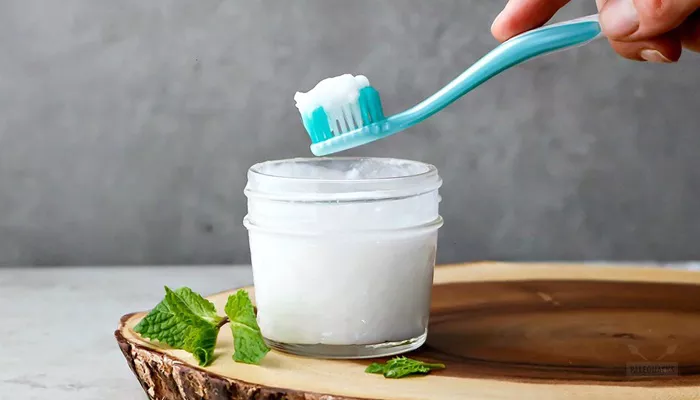Lanbena is a popular brand known for its affordable beauty and health products, including its tooth-whitening range. The rising demand for at-home teeth-whitening solutions has led to an influx of products like Lanbena. But, is Lanbena tooth whitening safe to use? This article provides a detailed look into Lanbena’s tooth-whitening products, their ingredients, effectiveness, safety, and best practices for use.
What Is Lanbena Tooth Whitening?
Lanbena tooth-whitening products are designed to remove stains and brighten teeth using easy-to-apply formulations. These products typically come in the form of tooth-whitening strips, gels, or pens. They promise to lighten discoloration caused by coffee, tea, wine, tobacco, and other common staining agents.
Lanbena’s products stand out for their affordability and availability in many online marketplaces. They are marketed as a convenient, at-home solution for achieving a brighter smile without the cost or hassle of professional whitening treatments.
Key Ingredients in Lanbena Tooth Whitening Products
To evaluate the safety of Lanbena tooth-whitening products, it’s essential to understand their main ingredients. The active components in these products often include:
Hydrogen Peroxide or Carbamide Peroxide
These are the most common whitening agents in dental care. They work by breaking down stains on the enamel and releasing oxygen molecules to lighten discoloration.
Sodium Bicarbonate (Baking Soda)
Known for its abrasive and whitening properties, baking soda gently scrubs surface stains from teeth.
Plant Extracts
Some Lanbena products include natural plant extracts for added benefits, such as soothing gums or reducing inflammation.
Fluoride
Fluoride helps strengthen enamel and reduce the risk of tooth sensitivity after whitening.
How Does Lanbena Tooth Whitening Work?
Lanbena products typically work through a simple application process:
Application of Whitening Agent
Users apply the whitening gel, strip, or pen to their teeth, ensuring even coverage over the stained areas.
Oxidation Process
The active ingredients penetrate the enamel and break down the chemical bonds of stains, resulting in a lighter appearance.
Rinsing
After the recommended duration, users rinse their mouths to remove any residual product.
Is Lanbena Tooth Whitening Safe?
The safety of Lanbena tooth-whitening products depends on various factors, such as ingredient concentration, application method, and individual oral health conditions. Here’s a breakdown:
Regulated Ingredients
The use of hydrogen peroxide or carbamide peroxide is generally safe when within the recommended concentration limits (usually 6% or lower for at-home products). Lanbena products typically adhere to these standards, but it’s essential to verify the ingredient list before use.
Proper Usage
Overuse or improper application can lead to tooth sensitivity, enamel erosion, or gum irritation. Following the manufacturer’s instructions is crucial to avoid these risks.
Individual Sensitivity
People with pre-existing dental conditions, such as cavities, gum disease, or weakened enamel, may experience discomfort or adverse effects. Consulting a dentist before using Lanbena or any whitening product is advisable.
Third-Party Testing
While Lanbena is widely used, some products may lack thorough clinical testing compared to dentist-recommended brands.
Consumers should research reviews and look for certifications to ensure product safety.
Benefits of Lanbena Tooth Whitening
Affordability: Lanbena products are cost-effective compared to professional treatments.
Convenience: They offer an easy, at-home whitening solution.
Quick Results: Visible improvements can often be seen within days of consistent use.
Natural Additives: Some formulations include plant-based ingredients for added oral health benefits.
Potential Risks of Lanbena Tooth Whitening
Tooth Sensitivity: Whitening agents can cause temporary sensitivity in some users.
Gum Irritation: Contact with gums may lead to mild irritation.
Enamel Damage: Excessive use or high concentrations of whitening agents may weaken enamel over time.
Best Practices for Using Lanbena Tooth Whitening Products
To maximize safety and effectiveness, follow these guidelines:
Read the Instructions Carefully
Always follow the usage directions provided by the manufacturer.
Limit Usage Frequency
Use the product as recommended (e.g., once daily for a set number of days). Avoid overuse to prevent enamel damage.
Monitor for Sensitivity
If you experience discomfort, reduce the frequency of use or stop altogether and consult a dentist.
Avoid Contact with Gums
Ensure the whitening agent is applied only to teeth to minimize gum irritation.
Combine with Good Oral Hygiene
Maintain regular brushing, flossing, and dental check-ups for optimal oral health.
Alternatives to Lanbena Tooth Whitening
If you’re unsure about Lanbena or experience sensitivity, consider these alternatives:
Professional Whitening Treatments
Administered by dentists, these treatments offer controlled and effective results.
Whitening Toothpaste
Contains mild abrasives and lower concentrations of whitening agents for gradual results.
Whitening Mouthwashes
Provides a gentle, daily whitening option without intense agents.
Other At-Home Kits
Brands with more clinical backing, such as Crest Whitestrips or Opalescence, may be preferable.
Conclution
Lanbena tooth-whitening products can be a safe and effective option for individuals seeking affordable at-home whitening solutions. However, safety largely depends on proper usage, individual oral health conditions, and product authenticity. To ensure the best results, consult with a dental professional before beginning any whitening regimen. Remember, a healthy smile is not just about aesthetics but also about maintaining strong teeth and gums.
Related topics:

